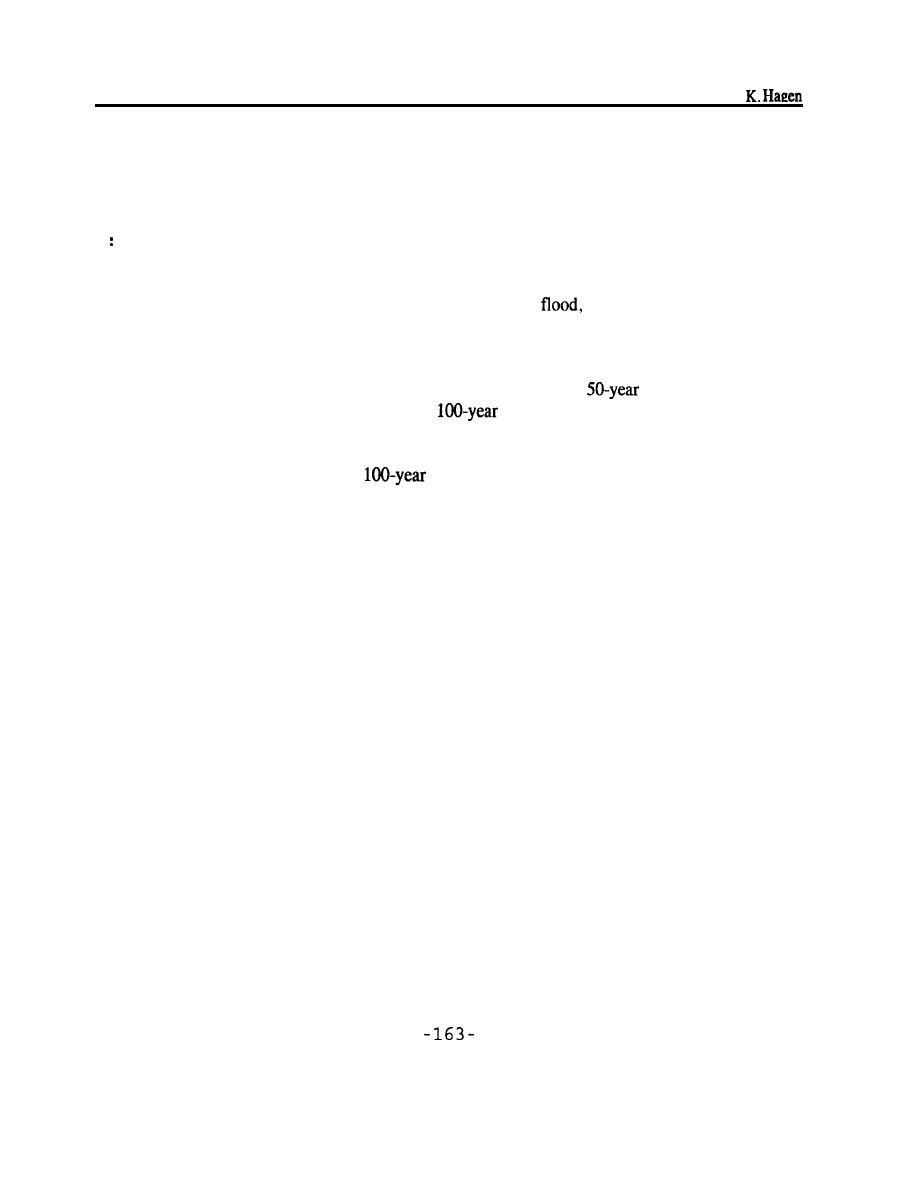
Vernon
Q ..
What happens when you have to do something like this on these structures. Do you design
for that extra storage? How much more are you talking about beyond an average dam, an
average one that doesn't have a lot of sedimentation problems?
A
Well, some of them don't have too much sediment problems. Others, the life of the
project is diminished in a lot of cases. Now what the Corps tried to do was design a
project to take care of a certain size flood. We talked about design floods for safety. The
design floods for flood control are a different design
much smaller than the design
floods for safety. Now design floods for flood control, what you're trying to do is retain
the water temporarily so that you're passing non-damaging flow downstream.
You may design the reservoir so that you can take care of a
flood without causing
damage downstream. But if you get a
flood, you have to pass some of the flow
over the spillway or open the gates wide in the outlet works. But you still are having less
damages than you would have had if you didn't have any reservoir there. It's just that you
can't completely control the
flood.
So after you exceed the design flood capacity then your level of protection is no longer a
hundred percent, you start getting damage. Not only that, channel capacity changes as
time goes on. If you build a big dam and you don't make major releases, the channel
downstream tends to fill in and farmers keep moving closer and closer to the river. They
use their bulldozers to push more material out into the channel, make the channel smaller,
and it naturally gets smaller, anyway, with more vegetation.
It doesn't have those big flows to clean the channel out occasionally. So if the channel
capacity gets smaller, you have to change your water control management plans so that
you don't let so much water out at one time. You have to try to let it out for longer
periods or do something to offset your loss of channel capacity because the larger your
channel capacity, the less you have to store in the reservoir. As your channel capacity
goes down, the more you have to store.
As far as sediment is concerned, we tried to estimate enough storage to take care of a
hundred years of sediment. Then on top of that, we'd have the storage for the flood
control. There are other purposes and other storage, so that presumably the project would
be still performing it's design function at the end of a hundred years.
But in many cases, that was a poor estimate, and that reservoir either started having more
sediment inflow than it had in the past or it got some unusual floods right at the beginning
of the project life and so it started filling up quickly. Then you had to re-analyze your
project and decide whether you still had the same kind of capabilities you started off with.



 Previous Page
Previous Page
